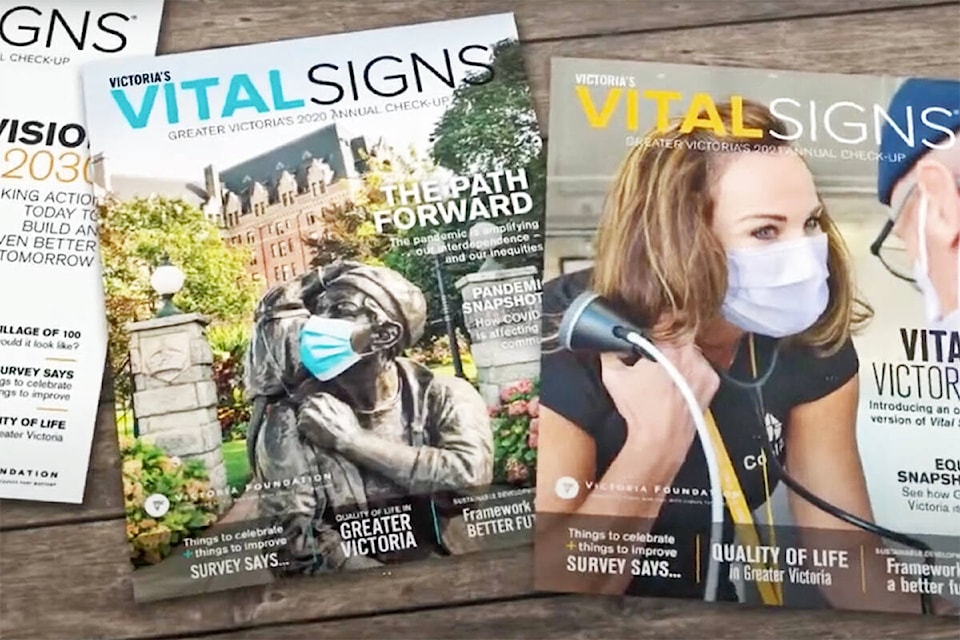Men have a more favourable view of life in Greater Victoria than women, according to the recently released Victoria’s Vital Signs report.
Overall, the web-based community survey identified 13 key areas. While response data relating to gender was limited in the report, researchers found male respondents more frequently gave positive answers to questions about many of those areas.
In general, men felt safer in their neighborhood than women, had a more positive outlook on local housing options and considered Greater Victoria’s current level of environmental sustainability to be excellent.
Meanwhile, a higher percentage of women respondents felt there should be more opportunities to support cross-cultural education and awareness, and that it’s important to foster, learn and respect Indigenous culture, values and traditions.
A higher proportion of male respondents, 57 per cent, answered “never” when asked how often they’ve felt unsafe due to their religion, ethnicity, race or sexual orientation – compared to 31 per cent of women.
READ: Victoria’s 2021 Vital Signs report released with B-grade quality of life
Female respondents have a less positive view of the region’s housing options. Men more frequently answered that the availability of affordable homes is good or excellent and less likely to say the availability of affordable rentals are poor or below average.
More men said their ability to find suitable employment in Greater Victoria was excellent, while women are more stressed about their personal finances than men.
An analysis of the survey’s response patterns clustered respondents into five groups, with varying quality of life levels and demographics. The “Pandemic-Impacted Victorians” group had the highest percentage of women (59 per cent) out of all five and had the highest percentage of those who permanently lost their job or pay due to COVID-19.
Vital Signs sourced information from the B.C. Women’s Health Foundation, among others, in making the report. The foundation found more than 50 per cent of B.C. women were employed in jobs and industries most affected by public health measures, including health care, retail, education and accommodation and food services. Women across the province lost 60 per cent more jobs in March 2020 than men.
The Vital Signs report stated that women were more likely than men to say their level of stress and mental and physical health worsened due to COVID-19. Compared to men, a smaller percentage of women gave Greater Victoria top marks when it comes to accessing physical and mental health care.
Do you have a story tip? Email: jake.romphf@blackpress.ca.
Follow us on Twitter and Instagram, and like us on Facebook.
